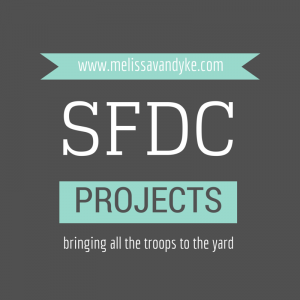Bringing all the troops to the project
Writing a use case is an ideal way of getting organized and making sure you are not missing any key components for the deliverable you are working on. Going through the exercises outlined below for any project you take on will help in many ways, the most important being:
(A) transferring everything from your head to paper will instantly allow you to stop worrying about the to-do list, freeing up your brain to focus on solving problems and getting creative (when your executive summary, to-do list, and requirements only live in your head you are using a lot of brain power just trying not to lose them!), and
(B) bringing all stakeholders together, making sure their requirements are covered and that your interpretation of the project deliverable is approved!
The use case includes documenting business requirements (BR) and functional requirements (FR). BRs are defined by the business as an important process or function they need to be able to perform or have access to as a deliverable of the project. BRs sound a lot like this: (1) I need to track and organize clients and prospects (and referrals/businesses) with efficiency and or (2) We need to quantify why deals are lost to key competitors and send a personalized follow up survey.
#1) Identify the business requirements:
A. Conduct a Project Kickoff session and invite every person that represents a business unit impacted by the current process (typically one person to represent a group is sufficient, i.e. one person from the Executive Assistant pool and/or one person to represent the Accounting team, etc.). These people will be your stakeholders, super users and subject matter experts (SME) (together, the “Troops”). Their job is to make sure you understand the current and future state of the deliverable.
B. Identify your Executive Sponsor and ensure they understand their role. This person typically covers both of the below roles and will sign your Project Plan.
• Senior / Executive Sponsor: Articulate the vision of the project and provide support for resource requirements. Aid the team in driving the process modifications required for adoption of the resulting changes.
• Business Owner: Provide project oversight. Aid the team in driving the process modification required for adoption of the resulting changes. Secure the resources and funding needed for the development, implementation integration and roll out. Remove organizational roadblocks
C. Understand your role as project manager and administrator:
• Project Manager: Responsible for development of requirements, management of project scope, schedule and budget; and securing project resources, both internally and externally, to complete project. Reports progress and escalates issues as necessary to Business Owner and Project Sponsor(s).
• System Administrator: Responsible for system design, quality assurance testing, conducting initial training sessions for all users and continual support and administration of the technology.
D. Start the list of business requirements that you already know (i.e. track opportunity pipeline) and bring them with you to get the conversation going. Bring a draft of the Business Case documentation and discuss it together.
E. Continue the conversation with all stakeholders/SMEs as necessary to make sure you have documented the current state correctly and defined all of the business requirements. Remember, business requirements define the future state being worked toward. If you hit roadblocks touch base with your Executive Sponsor for assistance.
F. If any requirements are identified that you believe should not fall under the current project scope, propose a phased release so you give yourself time to get through the first deliverable and then add on enhancements in a quick phase two.
#2) Document the functional requirements:
A. Take all of the BRs and translate them to salesforce.com features or functionality language. If we take the earlier BR example “I need to track and organize clients and prospects (and referrals/businesses) with efficiency” we can identify all steps you will have to do in order to make this a reality in salesforce.com. Keep all FRs associated to their assigned BR so you can check off BRs as you solution them:
• Define Account record types and page layouts/fields required for each bucket.
• Decide if you will propose implementing the Leads object and define the difference between lead and referral or industry contact/event organization/membership organization, etc.
• Define how Opportunities object will be used and what the stages are, when a prospect become a client.
• Manage contact sync in Outlook, define rules and a plan identifying if you will implement Salesforce for Outlook or another app from the AppExchange.
• Does this include managing an RFP process or Contracting solution? If so, make sure these items are tracked as their own Business Requirements.
B. If you find any BR is too vague, work with the team to continue breaking it out to the right level of detail.
#3) Put it all together:
Now you can work with all the information you have gathered to ensure you provide clear documentation to your Troops for final approval:
• Write an executive summary outlining the defined problem/solution requested, a list of team members (team charter), the large items in the scope and items that might fall outside of the scope for this deliverable (enhancements)
• Include the business requirements and functional requirement documentation as an attachment
• A current state workflow can be powerful to add to the final use case document (visual flow diagram is best if possible). The benefit of documenting the current state is to highlight the inefficiencies you have identified in the current state so you can talk about how you are going to solve these problems in your design!
• Proposed future state visual flow charts are powerful visual aids for stakeholders to understand what you are proposing (this gets them really excited and supportive of your work!). Specifically if you visualize the current state workflow and then separately visualize the future state workflow showing how many efficiencies are gained.
